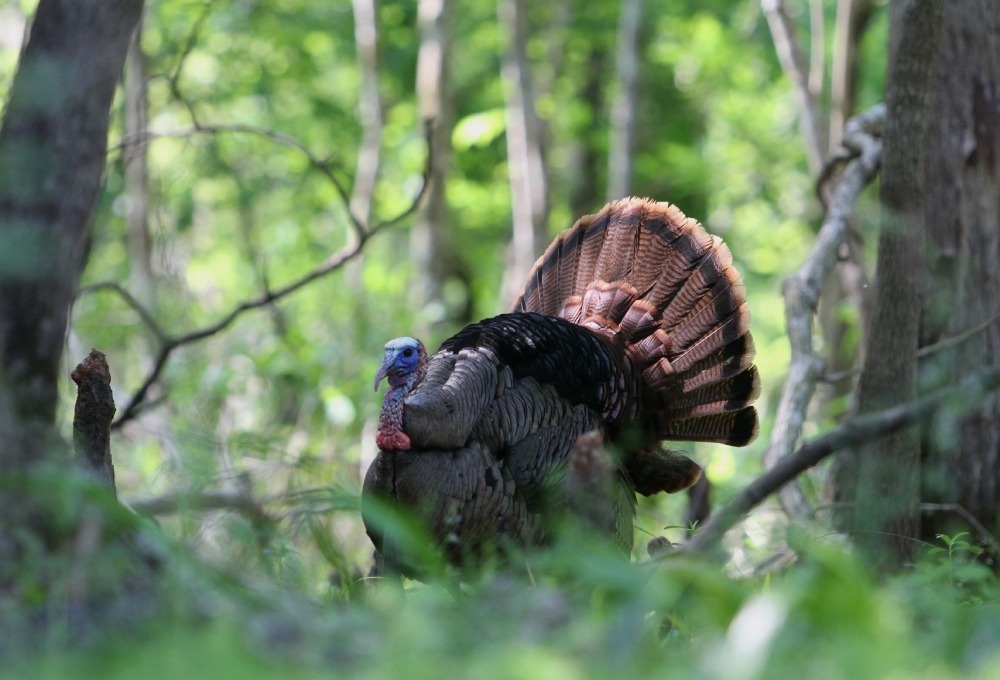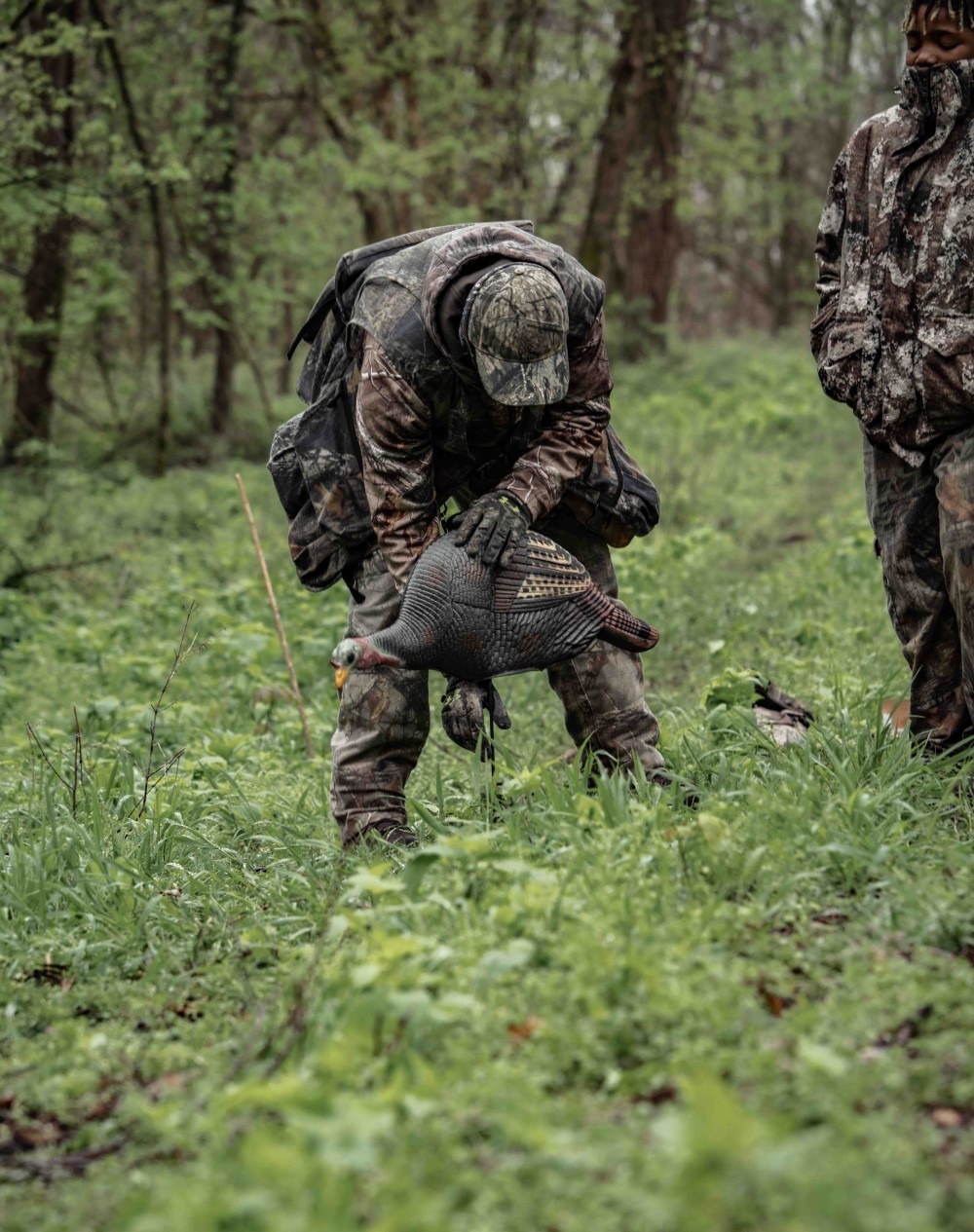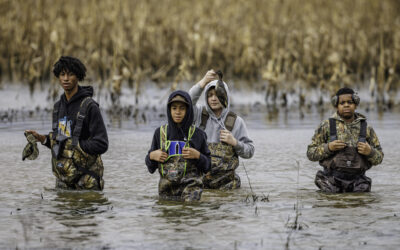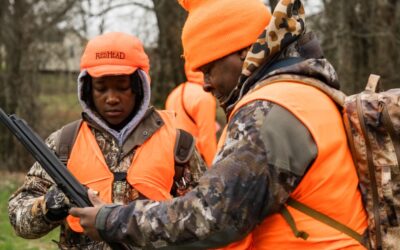A simple question that all turkey hunters ask themselves.
This question can consume our thoughts as we’re setting the coffee pot to brew at 3:30 a.m., as we slide on our boots, as we load the truck, and even as we’re hearing a turkey sound off on the roost as the sun slowly rises through the timber.
Depending on the outcome of the hunt, we hunters may mull over the “shoulda, coulda, woulda’s” with turkey decoys for days after the hunt.
Decoys can be a turkey hunter’s greatest ally or foe.
They allow a turkey to put a face to the voice they’ve heard call at them which can draw the bird in, but can also keep it away if the setup is not executed right.
This simple question does not have a simple answer. Solutions can be found based on your responses to these three questions.
- Have I hunted or scouted this land before?
- Do I know if turkeys are in the area and where they are located?
- How far do I have to walk?
To Decoy
If you answered yes to the first two questions you will most likely want to bring a decoy(s).
Knowing the terrain from previous hunting seasons or from pre-season scouting can level the playing field for you and the turkeys. You should already understand the layout and topography of the grounds. Where landscape features turkeys like to occupy are—wooded ridges, creek bottoms, open fields, and woods with mature trees. You may even be lucky enough to see longbeards in the off-season while on a hunt or glassing session.

During pre-season scouting, revisit those areas and identify turkey signs like dust bowls, droppings, tracks, scratchings, “…feathers on the ground and even strut marks where gobblers are waltzing back and forth in full strut to impress the ladies.” Seeing “an abundance of signs indicates that wild turkeys frequent the area” and could be those same toms you saw in the off-season. When you pinpoint and pattern the roosting, pitching, and roaming routine for a flock of turkeys, you’ll spend less time worried about the birds themselves and more time focusing on your setup.
With decoys, you can optimize your setup and harvesting chances, by “putting them out in the pitch black dark way before daylight,” said Chris Hearn, West TN Field Representative for Tennessee Wildlife Federation.
This is important to keep in mind, especially when considering your answer to the third question.
If a flock of turkeys are roosting in the back corner of a wildlife management area (WMA), you may have to arrive earlier than expected to make the long trek to that nook of the land. Some people say it’s better to be safe than sorry and pack some decoys just in case. However, you may regret your decision if you’re attempting to quietly sneak through the darkness with all of your gear and are in a foot race with the rising sun. Turkeys will let you walk under them in the dark but once daylight starts to break, their 270-degree field of vision will pick up any out-of-the-ordinary movements like you struggling to carry your decoys, seat cushion, blind, firearm amongst all of the basic items in your turkey vest. A decision made on decoys can have personal preferences factored in but also depends on your answer to the second question.
If you know where the turkeys are located, the decoys could give you an advantage.
In the earliest part of the season, you’ll see that most turkeys are still grouped-up and the gobblers are looking to establish dominance. “At the beginning of the season when toms are hot and willing to fight I might have a jake out there with a hen,” said Amy Hall, Program Coordinator for Tennessee Wildlife Federation. Running an immature male with an adult female is a smart move and should have a tom or two strutting over to pay your jake decoy a visit.
“Towards the end of the season when they are tired and don’t want to fight, I might just put a hen out there,” said Hall. During the late season, a majority of the hens have been bred and are no longer seeking male attention which can make for fierce competition amongst the mature longbeards. You may not hear much in the woods around this time, but it does not mean the turkeys have disappeared. Some will pipe down from all of the hunting pressure they’ve endured, but others will still be reactive as they search for the last breedable hens.
Renowned turkey biologist, Dr. Michael Chamberlain told RealTree, “I personally have seen that mature birds are easier to call in when there’s competition to breed with the remaining hens, such as during laying and incubation periods. Gobbling intensity may not be as high as during other times of the season, but toms are responsive if you can catch their attention.”
Good calling combined with a decoy setup that tells a believable story should help catch any gobbler’s attention early or late in the season. And don’t forget to follow decoy safety if you choose “to decoy.”
Not to Decoy
Have you never stepped foot on this piece of land and aren’t sure it has any turkeys?
In situations like this, “most people want to be pretty mobile,” said Hearn. Turkey hunting on unfamiliar territory will most likely consist of covering lots of ground and attempting to elicit a gobble in response to your calling.
While it never hurts to be prepared, you may be feeling the pain when you’re walking endlessly through hardwoods trying to determine if turkeys even exist on this property all the while toting decoys and all of your other gear.
It’s important to note that “not to decoy” doesn’t necessarily always mean to not bring a decoy at all.

Say you’ve struck up a longbeard and you can tell he’s on his way and relatively close. As a turkey hunter, you should always have the mindset, especially in moments like this, that “the bird can see where I am before I can see him.”
There’s no need to get flustered, but it’s time to come up with a game plan. Think to yourself, is it worth trying to make sure the decoys are at a safe but shootable distance away from me? Will my setup put me in the line of sight for the incoming bird? Are the decoys directly in front of me making me in the line of fire from a potential unknown hunter? Does my decoy setup enable me to easily move to my right or left side to adjust to the turkey’s position?
Turkeys are smart and wary creatures. These elements, if not executed correctly, can hang a bird up or if you think on them for too long, have you busted by the approaching bird.
OR you can position yourself against a tree that gives you good cover and a clear shooting lane, let your calling do the work, and wait for the bird to come to you.
Of course, there will be situations when you have more time before the tom closes in on you and you can factor in important elements, but when you’re hunting on foreign terrain, you can never be sure of what will happen making safety and efficiency the most important things to consider.
It’s Up to You
The simple question we started with doesn’t have a simple answer and personal preferences play a large role in decision-making. So as you’re pouring yourself that early morning cup of coffee, mull over those three questions and think about your situation. And when you have quietly and carefully shut that car door on the edge of the woods, be okay with your final decision. Understand that the turkeys will be there tomorrow morning or next season regardless if you bring a decoy with you or not.
To help you prepare for all future seasons, visit tnwf.org/academy to check out our Hunting and Fishing Academy’s adult workshops and virtual classes.




